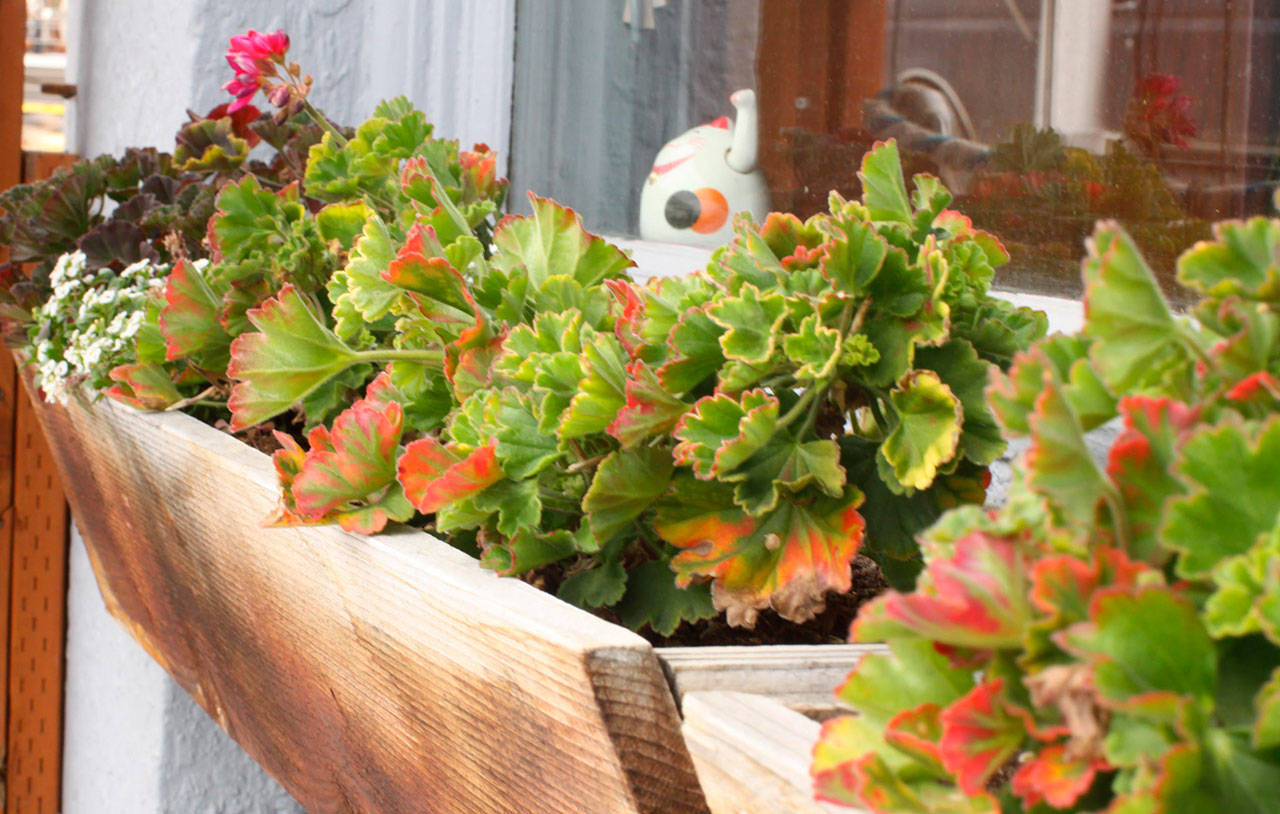Window boxes are a special type of container garden. Like other container plantings, window boxes bring the garden closer to your home, increasing access to your plants for watering and other care. They multiply limited garden space and allow you to expand your garden vertically.
But unlike other container gardens, window boxes require more permanent changes to your home structure and their positioning (at eye level) makes them more conspicuous. For these reasons, it is good to plan a window box carefully.
Containers
Window boxes are made from a variety of materials including wood, plastic and metal. Most are intended to last for more than a season. Use of a liner (a metal or plastic container that sits inside the window box) can extend the life of a window box.
By design, window boxes are not very deep or wide. For plant health, select one that is at least 8 inches wide and deep.
Unless you have a deep windowsill on which to set the window box, you will need to mount it on the wall below the window. You can attach the window box directly to studs in the wall or attach brackets (L-shaped pieces of hardware on which the box will rest) to the studs to provide additional support for the box from below.
If you have vinyl siding, you should use vinyl siding hooks to prevent damage to your siding.
Use at least one bracket or siding hook for every 12 to 18 inches of window box length.
Plants
The right combination of plants is key to a beautiful window box. Although different color schemes and planting formulas often drive plant selection, first and foremost, pick plants based on the window box’s sun exposure. Full sun accommodates blooming annuals, while shade best supports foliage plants.
Three types of plants are commonly used in window boxes: thrillers, spillers and fillers.
Thrillers are tall plants that provide a focal point. Place these plants at the back of the box (side closest to the window) so that they do not shade or block the view of shorter plants from the outside.
Spillers are trailing plants that “spill out” of the window box. These plants make the box look much bigger than it is and add a bit of drama. Place spillers at the front of the box (or corners) so that they can cascade over the side as they grow.
Fillers are medium-height plants that fill the gap between the thrillers and the spillers. They often anchor the planting and provide a sense of abundance.
In choosing plants, experiment with color. Monochromatic, complementary and contrasting color schemes all work. If desired, take cues from the container, the part of the house to which the box attaches or the landscape.
Mix plants with different types of foliage and texture to ensure that each plant stands out. For a cohesive look, limit the variety of plants included in your window box and repeat selected groupings of plants.
Planting and care
Make sure your window box has multiple drainage holes along its length. Fill the box with high-quality lightweight potting mix high in peat, perlite or other ingredients that improve soil drainage and aeration. Do not use garden soil in the container.
Space plants 2-5 inches apart, depending on their mature size. Do not worry if the box looks a bit empty; healthy plants will quickly grow to fill the space. If you want immediate visual impact, you can place plants closer, but you will need to prune the plants as they grow to prevent overcrowding.
A symmetrical placement of plants (with the right and left side of the box being mirror images) provides balance.
Water your window boxes when soil an inch below the surface is dry to the touch. Irrigate until water drips through the holes in the bottom of the container. In dry weather and as the plants grow (and their roots fill the box), you might need to water every day.
With frequent watering, nitrogen will quickly be leached from the soil. Use a water-soluble flowering plant fertilizer diluted to one-quarter strength once a week or according to package instructions.
To prolong flowering, deadhead blooming plants. Consider removal of plants that have stopped blooming or become too big; be careful, so as not to disturb the roots of the remaining plants.
Let your garden be a part of your view to the outdoors while adding to your home’s exterior beauty.
Expand your garden vertically with a window box this growing season.
Jeanette Stehr-Green is a WSU-certified Clallam County Master Gardener.


